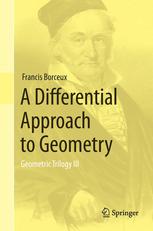

Most ebook files are in PDF format, so you can easily read them using various software such as Foxit Reader or directly on the Google Chrome browser.
Some ebook files are released by publishers in other formats such as .awz, .mobi, .epub, .fb2, etc. You may need to install specific software to read these formats on mobile/PC, such as Calibre.
Please read the tutorial at this link: https://ebookbell.com/faq
We offer FREE conversion to the popular formats you request; however, this may take some time. Therefore, right after payment, please email us, and we will try to provide the service as quickly as possible.
For some exceptional file formats or broken links (if any), please refrain from opening any disputes. Instead, email us first, and we will try to assist within a maximum of 6 hours.
EbookBell Team

4.0
76 reviewsThis book presents the classical theory of curves in the plane and three-dimensional space, and the classical theory of surfaces in three-dimensional space. It pays particular attention to the historical development of the theory and the preliminary approaches that support contemporary geometrical notions. It includes a chapter that lists a very wide scope of plane curves and their properties. The book approaches the threshold of algebraic topology, providing an integrated presentation fully accessible to undergraduate-level students.
At the end of the 17th century, Newton and Leibniz developed differential calculus, thus making available the very wide range of differentiable functions, not just those constructed from polynomials. During the 18th century, Euler applied these ideas to establish what is still today the classical theory of most general curves and surfaces, largely used in engineering. Enter this fascinating world through amazing theorems and a wide supply of surprising examples. Reach the doors of algebraic topology by discovering just how an integer (= the Euler-Poincaré characteristics) associated with a surface gives you a lot of interesting information on the shape of the surface. And penetrate the intriguing world of Riemannian geometry, the geometry that underlies the theory of relativity.
The book is of interest to all those who teach classical differential geometry up to quite an advanced level. The chapter on Riemannian geometry is of great interest to those who have to “intuitively” introduce students to the highly technical nature of this branch of mathematics, in particular when preparing students for courses on relativity.